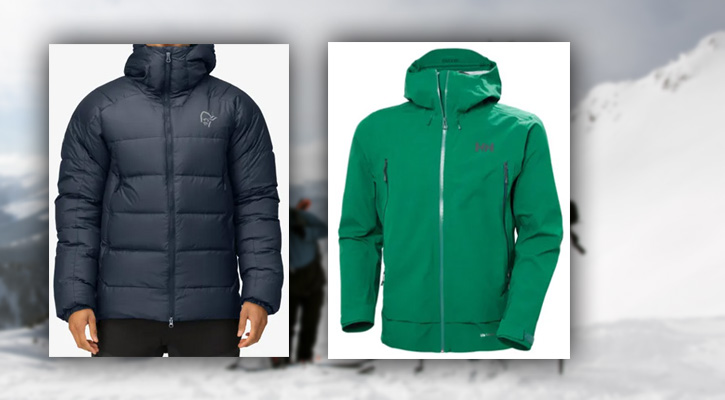
In the quest for the ultimate outdoor gear, two brands stand out in the realm of adventure apparel: Norrøna and Helly Hansen.
Born from the rugged landscapes of Norway, these brands have become the go-to for outdoor enthusiasts who demand the best.
But when pitted against each other, which brand emerges as the leader in durability, style, and innovation?
As we dive into this side-by-side comparison, from the peaks of their high-performance jackets to the depths of their thermal technology, we’ll explore what sets these two apart and what might make one the superior choice for your next outdoor adventure.
Will it be the sleek designs of Norrøna or the tried-and-true resilience of Helly Hansen that wins you over? Read on to find out!
Contents:
1. Norrøna Outdoor Gear
History of the Brand
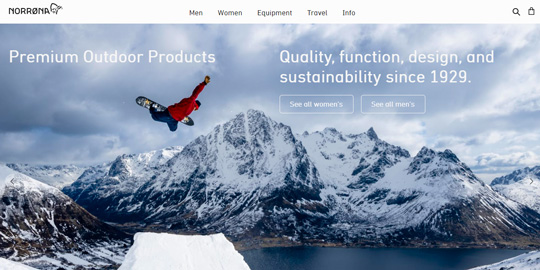
Norrøna official website
In 1929, a Norwegian outdoor enthusiast named Jørgen Jørgensen embarked on a quest to find durable outdoor equipment suitable for Norway‘s challenging conditions. This marked the inception of Norrøna as he began crafting basic products such as leather gear, canvas backpacks, and cotton clothing.
In 1948, Bjarne Jørgensen, the second generation, assumed leadership of the company. Over the ensuing years, Norrøna diversified its product range and shifted its focus to technical functionality and mountain gear.
In 1971, Ole Jørgen Jørgensen, the third generation, took over as manager. The company also enlisted the expertise of engineer Tomas Carlstrøm to aid in the development of backpacks and mountain tents. During the 1970s and 80s, Norrøna gained acclaim for pioneering products and sponsoring expeditions.
Notable achievements included the introduction of the first tunnel tent in 1972, the debut of Europe’s first Gore-Tex jacket in 1977, and the provision of gear for the initial winter ascent of Trollveggen in 1979.
In 2000, design became Norrøna’s third cornerstone, characterized by their ‘Loaded Minimalism’ philosophy, which emphasizes sleek, practical design. The company commenced international expansion in the mid-2000s, opening new collections and stores in Europe and North America.
In 2015, sustainability was incorporated as Norrøna’s fourth cornerstone, with the company pledging transparency and donating 1% of sales to environmental causes.
Today, spanning four generations, Norrøna remains a family-owned enterprise headquartered in Norway. Under the stewardship of current manager Jørgen Jørgensen, the company continues to innovate technical outdoor gear deeply rooted in Norwegian traditions.
Don’t miss: 9 Brands like Norrøna: Our Best Alternatives
Materials, Fabrics, and Production Process
Norrøna prioritizes the use of high-performance, environmentally friendly materials in their product line. They are at the forefront of incorporating sustainable fabrics such as organic cotton, recycled polyester and nylon, and down insulation that adheres to the Responsible Down Standard (RDS).
In addition, they use Bluesign-approved fabrics. Norrøna actively participates in initiatives like the Fashion for Good organization that focuses on sustainability. Through their 1% for Nature program, they contribute 1% of annual sales to environmental causes and organizations dedicated to preserving nature.
The company strives for complete transparency in its sourcing and manufacturing processes. Sustainability is a fundamental principle of Norrøna’s business ethos. They innovate technical products while pushing the boundaries of eco-friendly materials and minimizing environmental impact.
Similar to other high-end outdoor brands, Norrøna employs cutting-edge fabric technologies and materials, including various versions of Gore-Tex membranes, Polartec performance fabrics, and PrimaLoft synthetic insulation. The natural down utilized for insulation comes from the Pyrenees mountains in France, and the bird treatment complies with high European standards.
The video will be loaded from YouTube.com, a third party. If you play it, you accept their terms of service, and their use of cookies.
Read also: Norrøna vs The North Face (Outdoor Gear Comparison)
Where is Norrøna outdoor gear made?
Norrøna’s outdoor equipment is manufactured in various facilities across Europe and Asia. Currently, the brand utilizes factories in Lithuania, Spain, Portugal, Denmark, and Sweden in Europe, as well as in Vietnam, China, and Thailand in Asia. (source)
Recommended Products
Norrøna trollveggen down 850 Men’s Jacket
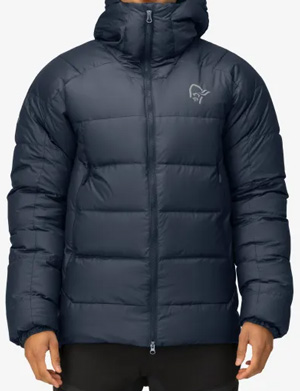
Image: norrona.com
Check it out at Norrona.com
The Norrøna trollveggen down 850 Men’s Jacket stands out as a top-tier mountaineering down jacket, incorporating aeroDownproof face fabric and RDS-certified 850+ fill power down to deliver exceptional insulation without adding unnecessary weight.
Notable features include windproof Pertex Quantum 30D 100% recycled polyester face fabric, 100g PrimaLoft Gold insulation within pockets and on the shoulders, functional hand warming pockets, an insulating hood, and an extended back for protection.
Read also: 10 Norwegian Jackets and Clothing Brands that You’ll Love
Norrøna lyngen 40L Pack
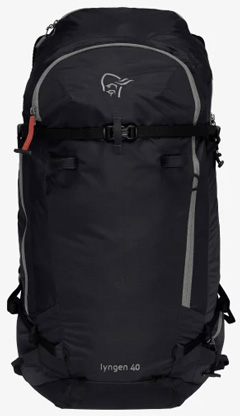
Image: norrona.com
Check it out at Norrona.com
The Norrøna Lyngen 40L Pack is a robust backpack crafted for ski touring, climbing, and trekking. Constructed from durable ECONYL® material, it boasts water resistance and high-quality YKK zippers. The backpack features a highly ventilated back with an open-back design and is equipped with dedicated compartments for avalanche gear, crampons, and a rope.
It’s tailored for carrying ski and snowboard equipment and comes with practical additions such as compression straps, a hip belt with a pocket, ice ax attachments, and a chest strap. The adjustable shoulder straps are designed with a 3D construction to make them breathable.
Read also: 3 Best Norwegian Backpack Brands: Our Top Picks
Prices
Norrøna manufactures long-lasting and comfortable outdoor equipment utilizing high-grade materials that endure demanding situations. Users express a sense of being well-supported and capable of excelling in the harshest environments due to Norrøna’s engineering and design.
However, the initial investment to have Norrøna in your gear collection is high, with their jackets priced between $300 and $1,000, and backpacks ranging from $100 to $700.
Are Norrøna products worth the price?
In our view, Norrøna’s outdoor apparel and jackets represent excellent value for those who are passionate about outdoor pursuits and want durable products. The brand employs cutting-edge technology to produce high-quality jackets renowned for their warmth and comfort.
Additionally, they offer a unique range of vibrant colors not commonly found in other brands’ collections.
However, for casual outdoor wear or beginners in a specific outdoor sport, exploring more budget-friendly brands may be a better option.
Learn more: Why is Norrøna so Expensive? Are Their Jackets Worth It?
2. Helly Hansen Outdoor Gear
History of the Brand
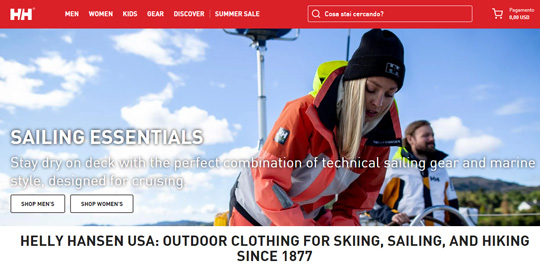
Helly Hansen’s official website
Helly Hansen, a Norwegian company founded by Helly Juell Hansen in 1877, is well-known for its water and mountain gear. Hansen, a sea captain, aimed to develop high-quality gear to protect sailors from extreme weather conditions.
Over the past 140 years, the brand has evolved significantly, expanding its product line to serve a wider range of activities beyond sailing. Helly Hansen is highly favored by skiing enthusiasts, and numerous ski resorts rely on the brand for outfitting their staff.
The company remains a global leader in sailing gear and apparel and is widely embraced by both professionals and enthusiasts. Additionally, the brand emphasizes the mountain gear sector, providing clothing and equipment for activities such as mountaineering, hiking, skiing, and backpacking.
Don’t miss:
9 Brands like Helly Hansen: Our Top Alternatives
10 Norwegian Jackets and Clothing Brands that You’ll Love
Materials, Fabrics, and Production Process
Helly Hansen incorporates water-resistant treatments into their garments to safeguard sailors and fishermen in demanding ocean conditions.
Helly Tech, their flagship fabric technology, is featured in their jackets and other apparel. This material is both breathable and highly waterproof, making it a challenging feat. It is similar to Gore-Tex.
The brand also offers popular fabrics such as Nylon, Polyester, Wool, and Fleece, many of which are recycled, along with RDS-certified Down insulation.
Helly Hansen places significant emphasis on environmental preservation and ethical values in their manufacturing processes, recognizing the environment as the outdoor community’s most precious asset. Further details about the company’s sustainability initiatives can be found here.
The video will be loaded from YouTube.com, a third party. If you play it, you accept their terms of service, and their use of cookies.
Read also:
Helly Hansen vs Patagonia: Which Brand is Better?
3 Best Norwegian Backpack Brands: Our Top Picks
Where is Helly Hansen’s outdoor gear made?
Helly Hansen produces its outdoor gear and apparel primarily in nations like China, Cambodia, Vietnam, and Bangladesh. Additionally, they acquire their textiles and components from facilities situated in Asia and Europe. (source)
Recommended Products
Helly Hansen Verglas Infinity Men’s Shell Jacket
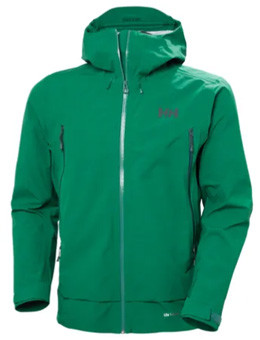
Image: hellyhansen.com
Check it out at HellyHansen.com
The Helly Hansen Verglas Infinity Men’s Jacket is specifically created in collaboration with professionals who experience unpredictable mountain weather for extended periods. It is suitable for backcountry skiing, trekking, and mountaineering, and incorporates the brand’s highly waterproof/breathable LIFA INFINITY™ technology, offering reliable protection without the use of chemicals.
The jacket is made with a recycled face fabric and a PFC-free durable water repellent treatment, emphasizing its eco-friendly nature. The hard shell offers great protection and is designed to be compatible with backpacks, helmets, and harnesses.
Additionally, it features pit zips for ventilation, a RECCO® transponder, and a waist drawcord for enhanced warmth.
Helly Hansen Transistor Backpack Recco®
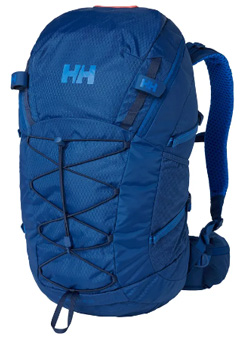
Image: hellyhansen.com
Check it out at HellyHansen.com
The 30L Transistor backpack is a top pick for outdoor pursuits due to its lightweight design and versatile, high-performance features. It combines the functionality of a larger hiking backpack in a smaller, more portable form.
The backpack boasts numerous attributes, including multiple compartments, full compatibility with hydration systems, 3D air-mesh ventilation on the rear, and a RECCO® reflector for enhanced security.
Prices
Helly Hansen offers a range of products with prices varying from mid to high range. Their jackets are priced between $75 and $2,000, while the backpacks start at $50 and can exceed $250.
Are Helly Hansen products worth the price?
It can be difficult to get a more affordable option with the same level of quality and durability if you are in search of high-performance outdoor gear, despite the initial appearance of this brand being expensive and not within everyone’s budget. So, yes, Helly Hansen is worth it if you ask us!
Learn more: Why is Helly Hansen so Expensive and Popular: Is It Worth It?
3. Which is Better? Norrøna or Helly Hansen?
Both are among the best premium brands you can find for mountain activities. Here is what to keep in mind when decision time comes:
Style and design: Norrøna tends to have a minimalist, Scandinavian aesthetic also offering bold colors and patterns. Helly Hansen is more in line with other famous outdoor brands when it comes to design.
Materials: Both brands use high-quality, technical fabrics suited for active outdoor use. Norrøna uses mainly the industry-standard Gore-Tex membranes, for waterproofness and breathability. Helly Hansen has its own line of fabric technologies like Helly Tech, LIFA, etc.
Fit: Norrøna tends to have a more fitted, athletic cut. Helly Hansen designs often have a more relaxed, casual fit.
Price: Norrøna items generally cost more and are positioned as a premium brand. Helly Hansen offers more affordable options, while also having a few expensive pieces.
Heritage: Helly Hansen has been around since 1877, outfitting sailors and explorers. Norrøna was founded more recently in 1929. Both draw on Scandinavian design traditions.
Activities: Both are great for hiking, skiing, snowboarding, etc. Helly Hansen has more technical sailing gear.
Marketing and Brand Positioning: Norrøna has a more family-owned, exclusive feel as a brand, while Helly Hansen is more widespread around the world.
In the end, Norrøna is considered more exclusive in the outdoor community, while Helly Hansen offers versatile basics at more accessible prices. In this case, you can’t go wrong with either if you want quality.
Read next: Jack Wolfskin vs Helly Hansen (Outdoor Gear Comparison)
